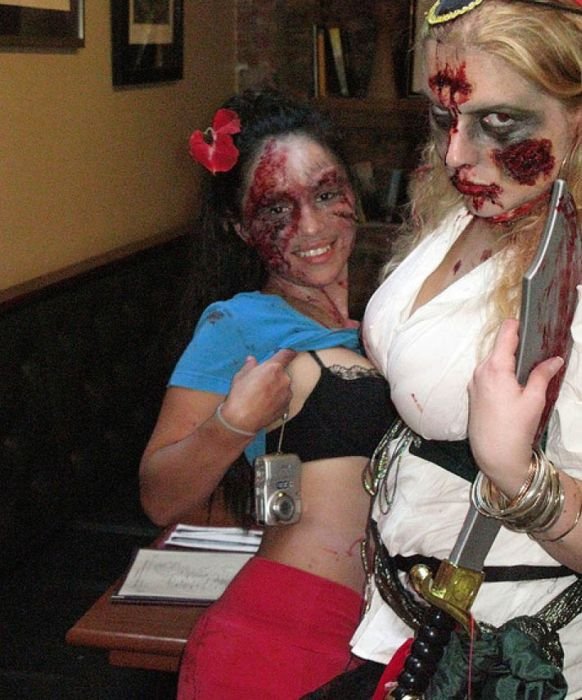|
|
Zombie Girl
|
In 1937, while researching folklore in Haiti, Zora Neale Hurston encountered the case of a woman who appeared in a village, and a family claimed she was Felicia Felix-Mentor, a relative who had died and been buried in 1907 at the age of 29. Hurston pursued rumors that the affected persons were given a powerful psychoactive drug, but she was unable to locate individuals willing to offer much information. She wrote:
“What is more, if science ever gets to the bottom of Voodoo in Haiti and Africa, it will be found that some important medical secrets, still unknown to medical science, give it its power, rather than gestures of ceremony.”
Several decades later, Wade Davis, a Harvard ethnobotanist, presented a pharmacological case for zombies in two books, The Serpent and the Rainbow (1985) and Passage of Darkness: The Ethnobiology of the Haitian Zombie (1988). Davis traveled to Haiti in 1982 and, as a result of his investigations, claimed that a living person can be turned into a zombie by two special powders being entered into the blood stream (usually via a wound). The first, coup de poudre (French: 'powder strike'), includes tetrodotoxin (TTX), a powerful and frequently fatal neurotoxin found in the flesh of the pufferfish (order Tetraodontidae). The second powder consists of dissociative drugs such as datura. Together, these powders were said to induce a death-like state in which the will of the victim would be entirely subjected to that of the bokor. Davis also popularized the story of Clairvius Narcisse, who was claimed to have succumbed to this practice.
The process described by Davis was an initial state of death-like suspended animation, followed by re-awakening—typically after being buried—into a psychotic state. The psychosis induced by the drug and psychological trauma was hypothesised by Davis to re-inforce culturally-learned beliefs and to cause the individual to reconstruct their identity as that of a zombie, since they "knew" they were dead, and had no other role to play in the Haitian society. Societal reinforcement of the belief was hypothesized by Davis to confirm for the zombie individual the zombie state, and such individuals were known to hang around in graveyards, exhibiting attitudes of low affect.
|
|









